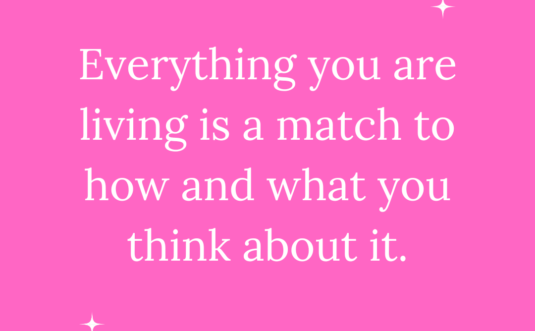Communication Styles
There are 4 recognized communication styles. There is passive, aggressive, passive-aggressive and assertive. Assertive communication is based on mutual respect and is empowering. The others, as you can see in the picture above, are not. This article focuses mainly on passive aggressive behavior and how to move into assertive behavior if you are the one being passive aggressive, and also how to recognize and respond to someone who chooses to act passively aggressive towards you. Look for future articles on both passive and aggressive behavior exclusively.
Are You Passive Aggressive?
There are many ways we can respond to conflict. We can face it head on and say what we feel, or we can skirt the issue and hold our feelings in.
Passive aggressive behavior is defined as a deliberate and masked way of expressing covert feelings of anger; someone who may appear to comply or act appropriately, but actually behaves negatively and passively resists.
Though there are different levels of passive-aggressive behavior, it’s likely that we have either been on the receiving end of a passive aggressive person or that we ourselves have exhibited this behavior at some point or another. And we know that it’s unproductive and uncomfortable for all parties involved. So how can those with a tendency toward passive aggression learn to respond differently to conflict?
Recognize the Behavior
The best way to nip this behavior in the bud is to become aware of when you’re reacting in a passive aggressive way. Normally, this kind of behavior stems from a desire to please other people. You’re trying to avoid conflict, not mess up, and appear confident, or you’re scared of being rejected or criticized. So instead of communicating your disagreement or dissatisfaction, you convey it through common passive aggressive behaviors, including sarcasm, gossip, giving someone the silent treatment, stalling, or quitting. In the moment, this approach feels easier than being upfront, but it often makes you come across as bitter, cold, difficult, manipulative, and/or insensitive.
Pay attention to how you respond in certain situations and write down which scenarios seem to drive you to passive aggressive behavior.
Some examples of passive aggressive behavior include:
1. Disguised Verbal Hostility
Examples: Negative gossip. Sarcasm. Veiled hostile joking — often followed by “just kidding.” Repetitive teasing. Negative orientation. Habitual criticism of ideas, solutions, conditions, and expectations.
2. Disguised Relational Hostility
Examples: Sullen resentment. Simmering anger. The silent treatment. The invisible treatment. Social exclusion. Neglect. Backstabbing. Two faced. Mixed messages. Deliberate button pushing. Negative or discomforting surprises. Overspending. Indirectly hurting something or someone of importance to the targeted person.
3. Disguised Task Hostility
Examples: Procrastination. Stalling. Forgetting. Stonewalling. Withholding resources or information. Professional exclusion. Denying personal responsibility. Excuse making. Blaming. Broken agreements. Lack of follow through. Resistance. Stubbornness. Rigidity. Avoidance. Inefficiency, complication, in-completion or ruination of task.
4. Hostility Towards Others Through Self-Punishment (“I’ll show YOU”)
Examples: Quitting. Deliberate failure. Exaggerated or imagined health issues. Victim-hood. Dependency. Addiction. Self-harm. Deliberate weakness to elicit sympathy and favor.
Identify Your Triggers
Once you have a list of the times and situations when you’ve reacted in a passive aggressive way, you can then start to see if there are any patterns. What might be triggering this reaction from you? Asking questions like, Where was I? Who was I with? What were we talking about? or pinpointing the moment your reaction started will make it easier to stop yourself the next time you’re in the same kind of situation.
Reactivity can easily get us into trouble, it is best to be mindful of triggers, take ten seconds before responding and come from a place of clarity and wisdom.
Listen and Observe
Have you ever stopped and listened to yourself while you’re talking? When you’re learning how to be less passive aggressive, this can be especially helpful. Observe the language you use when you’re in passive aggressive mode.
Examples: (An excerpt from Psychology Today)
1. “I’m not mad.”
Denying feelings of anger is classic passive aggressive behavior. Rather than being upfront and honest when questioned about his feelings, the passive aggressive person insists, “I’m not mad” even when he or she is seething on the inside.
2. “Fine.” “Whatever.”
Sulking and withdrawing from arguments are primary strategies of the passive aggressive person. Since passive aggression is motivated by a person’s belief that expressing anger directly will only make his life worse (Long, Long & Whitson, 2008), the passive aggressive person uses phrases like “Fine” and “Whatever” to express anger indirectly and to shut down direct, emotionally honest communication.
3. “I’m coming!”
Passive aggressive persons are known for verbally complying with a request, but behaviorally delaying its completion. If whenever you ask your child to clean his room, he cheerfully says, “Okay, I’m coming,” but then fails to show up to complete the chore, chances are he is practicing the fine passive aggressive art of temporary compliance.
4. “I didn’t know you meant now.”
On a related note, passive aggressive persons are master procrastinators. While all of us like to put off unpleasant tasks from time to time, people with passive aggressive personalities rely on procrastination as a way of frustrating others and/or getting out of certain chores without having to directly refuse them.
5. “You just want everything to be perfect.”
When procrastination is not an option, a more sophisticated passive aggressive strategy is to carry out tasks in a timely, but unacceptable manner. For example:
- A student hands in sloppy homework.
- An individual prepares a well-done steak for his or her spouse wife, knowing the spouse prefers to eat steak rare.
- An employee dramatically overspends the budget on an important project.
In all of these instances, the passive aggressive person complies with a particular request, but carries it out in an intentionally inefficient way. When confronted, he or she defends the work, counter-accusing others of having rigid or perfectionist standards.
6. “I thought you knew.”
Sometimes, the perfect passive aggressive crime has to do with omission. Passive aggressive persons may express their anger covertly by choosing not to share information when it could prevent a problem. By claiming ignorance, the person defends inaction, while taking pleasure in a foe’s trouble and anguish.
7. “Sure, I’d be happy to.”
Have you ever been in a customer service situation where a seemingly concerned clerk or super-polite phone operator assures you that your problem will be solved. On the surface, the representative is cooperative, but beware of the angry smile; behind the scenes, he or she is filing your request in the trash and stamping your paperwork with “DENY.”
8. “You’ve done so well for someone with your education level.”
The backhanded compliment is the ultimate socially acceptable means by which the passive aggressive person insults you to your core. If anyone has ever told you, “Don’t worry; you can still get braces, even at your age” or, “There are a lot of men out there who like plump women,” chances are you know how much “joy” a passive aggressive compliment can bring.
9. “I was only joking”
Like backhanded compliments, sarcasm is a common tool of a passive aggressive person who expresses hostility aloud, but in socially acceptable, indirect ways. If you show that you are offended by biting, passive aggressive sarcasm, the hostile joke teller plays up his or her role as victim, asking, “Can’t you take a joke?”
10. “Why are you getting so upset?”
The passive aggressive person is a master at maintaining calm and feigning shock when others, worn down by his or her indirect hostility, blow up in anger. In fact, the person takes pleasure out of setting others up to lose their cool and then questioning their “overreactions.”
If you learn to recognize when your phrasing is passive aggressive, you can catch yourself and change your tune.
Believe in Your Words
People whose parents were more controlling are more likely to become closed-off, withdrawn and cold in their adult relationships. One of the effects of living in a controlled environment is that our voices can get lost.
If we believe in ourselves and what we have to say and respect ourselves enough to show how we feel, then it is easier for us to become more assertive in how we respond to others.
Make Yourself a Priority
The more you believe that you have the right to express your wants and needs, the less likely you are to fear being swayed by others’ opinions or rejected for voicing what you want. And the less you fear those things, the more direct you’re likely to be.
So how do you teach yourself that your needs are as valid as anyone else’s? Prioritize yourself. Practice listening to what you want and giving it to yourself, rather than doing what you think you should do and going after what you think you should want. If you begin to treat your desires as valid and experience how good that feels, you’ll start to believe that you deserve similar treatment from other people.
By making yourself a priority, you’ll learn to respect that you can get your needs met by communicating clearly.
Ultimately, stopping passive-aggressive behavior comes down to figuring out what you want, and tuning out all the rest. Some people are so overly aware of what other people think and expect of them, so they just go along with it — at their own expense. They’re not thinking of what they actually want; it’s all about the other party’s agenda … they’re not willing to say, ‘But this is what I want.’
The solution, then, is to listen to your own voice so you have a sense of direction and knowing who you are and what you want.
Practice Mindfulness
By listening to your body and how you’re feeling, you can identify when you’re disconnecting your actions from what you think or feel (which is how passive aggression gets stirred up in the first place).
Getting people to recognize that the behavior is a form of self-sabotage is also key. They don’t link the fact that they didn’t get the project in on time, or the fact that they didn’t get the promotion, with their passive-aggressive behavior.
It’s also important to recognize that the emotion of anger, at its root, is not a bad thing. Anger has many positive qualities: It tells us when something is wrong, it can help you in terms of getting you to focus, evaluate your values and goals and strengthen your relationships and connections. So when you feel anger about something, it’s OK to express it and directly address it with whom it concerns (using assertive communication).
Confronting fear of conflict can also go a long way in minimizing passive aggression. In fact, in trying to tamp down on this behavior, you might actually experience more conflict. Hopefully that overt conflict can be negotiated and resolved, but it’ll be increased because what’s swept under the rug [ends up being surfaced] because there actually is a disagreement with something. So now you have to have it come to the surface and hash it out. So to some degree, it’s being more assertive, willing to engage in confrontation and conflict and being more willing to do things that are constructive that actually may take effort.
When Dealing With Passive Aggressive Behavior
So how can you best deal with a passive-aggressive person?
The following is an excerpt taken from Psychology Today:
1. Identify the behavior for what it is: hostility. “The big thing there is to recognize the phenomenon, the behavior, for what it is — to see it as a kind of hostility and not be fooled by the innocuousness, the sugar-coatedness of it,” Wetzler advises. “Once you recognize it’s a sign of hostility, it emboldens you to deal with it.”
The biggest mistake people make is to be lenient. Once you give in to passive-aggressive behavior, you lose your options, he explains. “It’s critical to see it as a power struggle, and then use the typical tactics one might use in a power struggle.”
2. Set limits — and then follow through. Make it clear that you won’t tolerate being mistreated, Wetzler says. If a person is constantly late and it bothers you, make it clear to the person that next time she is late meeting you for a movie, you’re just going to go in without her. “That’s a kind of limit-setting,” Wetzler says. “It’s also [a way of saying], ‘I’m not going to pay the price for your behavior.’”
3. Talk specifically — not generally. If you’re going to confront a passive-aggressive person, be clear about the issue at hand. A danger of confrontation is that statements turn too global — phrases like “You’re always this way!” won’t get you anywhere — so it’s important to confront the person about a specific action. For instance, if the silent treatment is what gets on your nerves, explain that a specific incident where you were given the silent treatment was considered a hostile move. “Call a spade a spade,” Wetzler says.
4. Practice assertive communication. There’s aggressive communication, there’s passive communication, and there’s passive-aggressive communication. None of these is as effective as assertive communication, Brandt says.
Assertive communication means being assertive and nonreactive, yet respectful. “You have a sense of confidence, you’re collaborative, [there’s a sense that] you both want to resolve the problem, in a ‘win-win’ sort of way,” she says. It’s also important to listen and not inject accusations or blame into the conversation. “It’s not just about getting your way, but taking the other person into consideration as well. Acknowledge the person and validate their feelings, which doesn’t mean you have to agree with them.”
XO,
Dana


